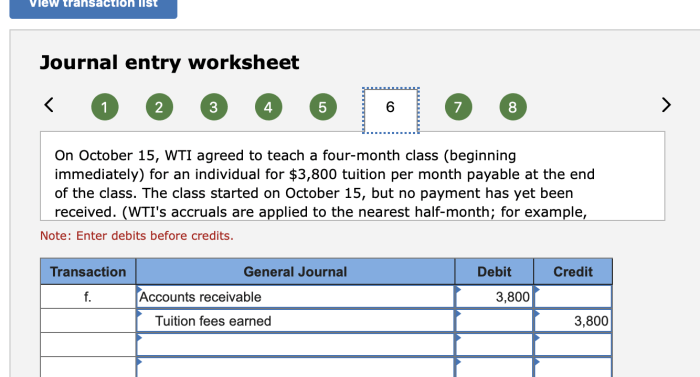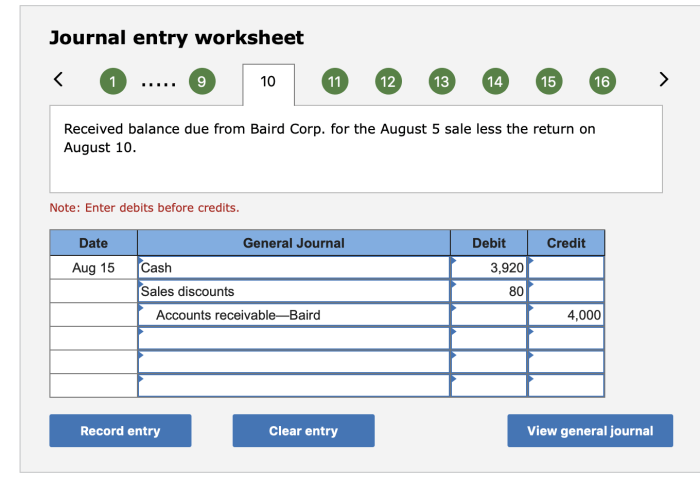Journal entry worksheet mcgraw hill – McGraw Hill’s Journal Entry Worksheet: An In-Depth Guide for Accounting Accuracy and Efficiency
In the realm of accounting, precision and organization are paramount. McGraw Hill’s Journal Entry Worksheet emerges as an indispensable tool, meticulously designed to streamline journal entry processes, enhance accuracy, and foster a deeper understanding of accounting principles.
Journal Entry Worksheet McGraw Hill

McGraw Hill’s journal entry worksheet is a comprehensive tool designed to facilitate the recording of financial transactions in a systematic and accurate manner. It provides a structured format that guides users through the process of analyzing and classifying transactions, ensuring their proper recording in the accounting system.
The journal entry worksheet offers several benefits, including:
- Improved accuracy: The structured format helps minimize errors by ensuring that all necessary information is captured and recorded correctly.
- Increased efficiency: The worksheet streamlines the journal entry process, reducing the time and effort required to record transactions.
- Enhanced understanding: The worksheet provides a clear and organized view of transactions, making it easier to understand the financial impact of each transaction.
Features of the Journal Entry Worksheet
The McGraw Hill journal entry worksheet includes several key features that enhance its functionality and effectiveness:
| Feature | Description |
|---|---|
| Transaction Date | Allows users to record the date of each transaction. |
| Account | Provides space to identify the accounts affected by the transaction. |
| Debit | Used to record the amount of the transaction that is debited to an account. |
| Credit | Used to record the amount of the transaction that is credited to an account. |
| Description | Allows users to provide a brief description of each transaction. |
Step-by-Step Guide to Using the Worksheet
To use the McGraw Hill journal entry worksheet effectively, follow these steps:
- Analyze the transaction:Determine the accounts affected by the transaction and the amounts involved.
- Record the transaction:Enter the transaction date, accounts, debit and credit amounts, and a brief description in the worksheet.
- Check for balance:Ensure that the total debits equal the total credits for each transaction.
- Post to the journal:Transfer the journal entries from the worksheet to the general journal.
Tips for Accurate Journal Entries

To ensure the accuracy of journal entries using the worksheet, consider the following tips:
- Use clear and concise descriptions.
- Double-check the debits and credits for each transaction.
- Review the journal entries regularly for any errors or omissions.
- Refer to the chart of accounts for guidance on account classification.
Integration with Accounting Software: Journal Entry Worksheet Mcgraw Hill
The McGraw Hill journal entry worksheet can be integrated with popular accounting software programs, such as QuickBooks and Sage 50. This integration allows users to:
- Export journal entries from the worksheet to the accounting software.
- Import transactions from the accounting software into the worksheet.
- Synchronize data between the worksheet and the accounting software.
Clarifying Questions
What are the key benefits of using the McGraw Hill Journal Entry Worksheet?
The worksheet streamlines journal entry processes, minimizes errors, enhances accuracy, and provides a structured approach to accounting.
How does the worksheet integrate with accounting software?
The worksheet seamlessly integrates with popular accounting software, enabling automatic data transfer and eliminating manual entry errors.